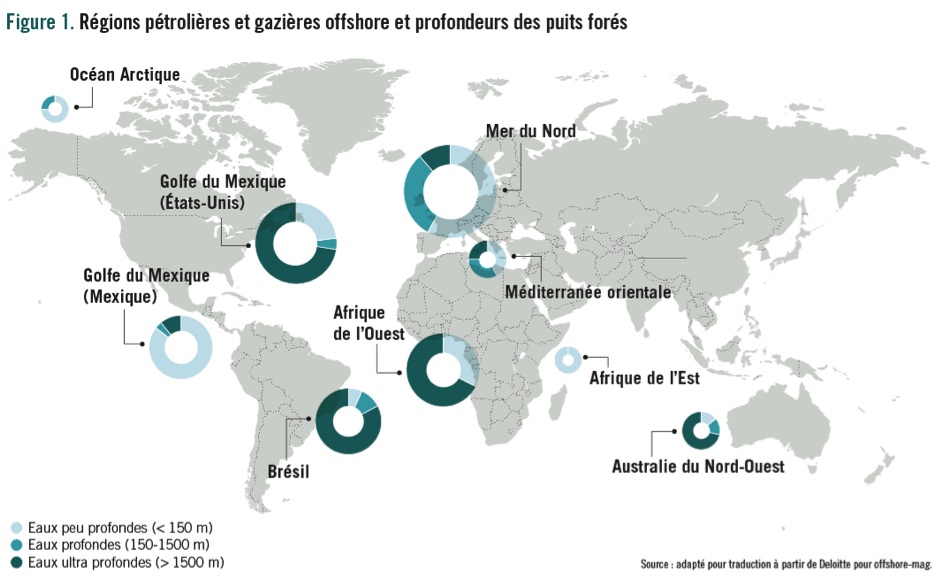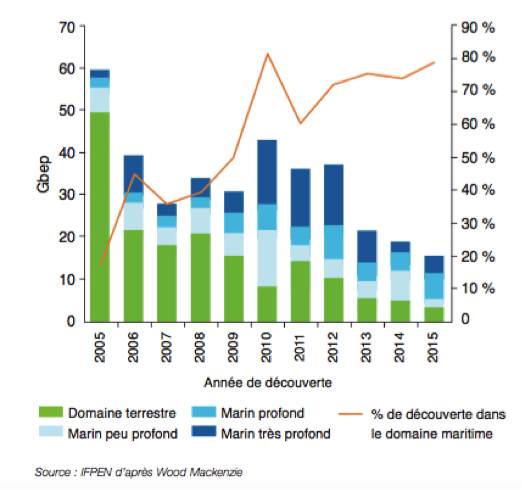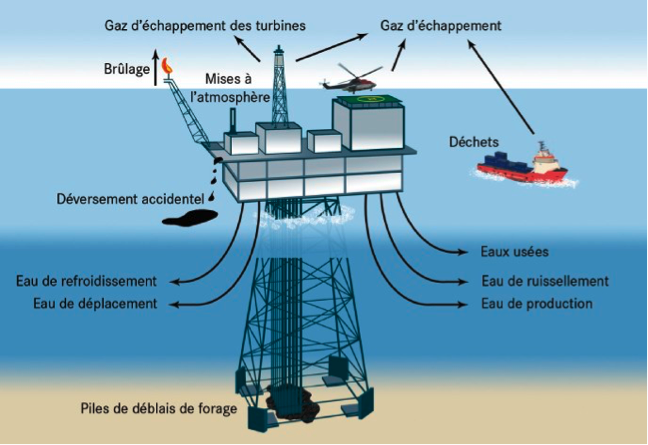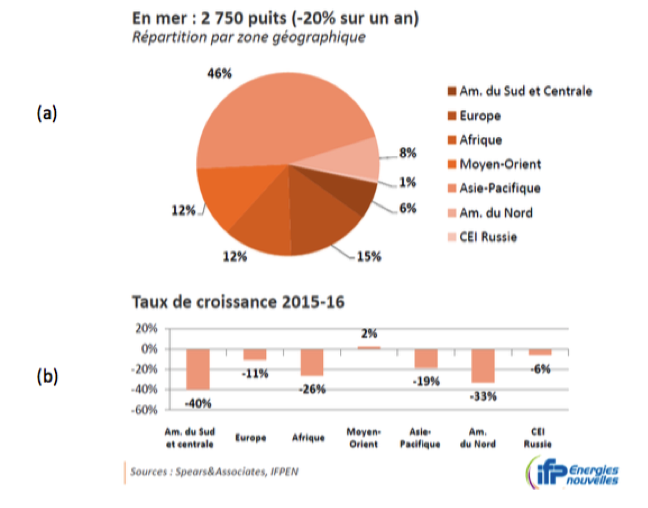Objectives
This project aims to identify levers to address the dual challenge posed by the need to improve the protection of the marine environment and the deep and rapid transition towards low-carbon energy sources required to meet the objective set by the Paris Climate Agreement.
Context
Offshore oil and gas exploration and production activities have considerably grown over the last few decades. Today, offshore production represents one-third of the global crude oil output and one-fourth of global gas production, thus playing an important role in the world’s energy supply.
 Source: adapted from Deloitte for offshore-mag
Source: adapted from Deloitte for offshore-mag
The main hydrocarbon deposits discovered over the last few years have been offshore, which confirms the increasing importance of the maritime space for extraction. Moreover, technological innovations have helped offshore drilling take on further importance by helping it move further out into deep and ultra-deep waters.
 Figure 2. Trend in types of oil discoveries since 2005
Figure 2. Trend in types of oil discoveries since 2005
The multiplication of oil and gas wells in increasingly deep waters undoubtedly brings with it greater consequences and threats for the environment and natural resources. Offshore platform accidents over the last few years (the DeepWater Horizon oil spill in the Gulf of Mexico, the Bohai-Bay oil spills of Penglai, the industrial accident on the Kulluk rig in Alaska, etc.) have shown that the ecological risks resulting from these activities can arise in all parts of the world and hit all actors in the sector, including the most important players. These incidents have also rekindled debate on the adequacy of the prevailing international regulatory framework and led to the development of new legal instruments at the national and regional levels.
 Figure 3. Environmental impact of Oil and Gas Activities (Source: OSPAR Commission (2010), 2010 Quality Status Report, chapter 7, «Offshore Oil and Gas Industry», p. 68.)
Figure 3. Environmental impact of Oil and Gas Activities (Source: OSPAR Commission (2010), 2010 Quality Status Report, chapter 7, «Offshore Oil and Gas Industry», p. 68.)
Since 2014, and despite a mild recovery in 2017, the extraction industry has faced major economic difficulties due to a sharp fall in crude oil prices. More broadly speaking, there has been a significant drop in investment throughout the oil and gas industry over the last few years. The high cost of offshore activities has meant that they have been directly affected by this. The exploration of some zones and operation of some wells have been suspended or abandoned due to insufficient profitability. This is therefore an appropriate opportunity for investors and national authorities to envision new directions for the sector going forward and to rethink the global energy strategy, particularly in the light of the commitments undertaken at the COP21 in Paris.
 Figure 4. Distribution of offshore drilling in 2016 by region (a) and growth in one year (b)
Figure 4. Distribution of offshore drilling in 2016 by region (a) and growth in one year (b)
Project's metholology
The project led by IDDRI aims precisely to contribute to these strategic discussions on the future of the offshore sector.
To this end, workshops bringing together various experts and stakeholders of the sector (regional and international organizations, national administrative bodies, the private sector, NGOs, research centers) will be organized. The conclusions of these discussions will then be reported to the relevant regional, national and international bodies (the United Nations Framework Convention on Climate Change; the Regional Sea Conventions of Western Africa, Western Indian Ocean and the Mediterranean; the International Maritime Organization; the European Union; France).
In this way, the project will attempt to identify levers to address the dual challenge posed by the need to improve the protection of the marine environment and the deep and rapid transition towards low-carbon energy sources required to meet the objective set by the Paris Climate Agreement.




